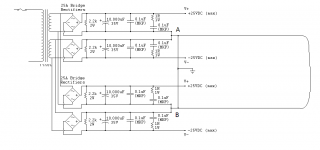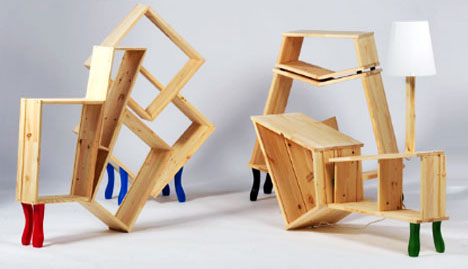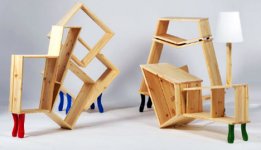Since you are using separate bridges for each secondary I think it's better to create the 0V rail at the output?
Yes, given the perverse design one could still improve things a little by directly joining the two 0V outputs, then running a single wire from there to the groundbreaker. This would shorten the piece of wire with uncontrolled charging pulses in it.
The funny thing about PSUs is that many people seem to instinctively wire them incorrectly, even after having the principles patiently explained to them.
Actually I meant like the power supply here DIY TDA2050 Hi-Fi Chip Amplifier (chipamp)
Actually I meant like the power supply here DIY TDA2050 Hi-Fi Chip Amplifier (chipamp)
I think my PSU is very similar to this.

My ground on CRC is solid 12ga bare copper wire. Whether is single or two doesn't matter. But ground pints are connected to clean DND
Last edited:
But it isn't. You have two of these parallel with diodes switching in parallel at slightly different times. But that is not your only problem, it's the way you have positioned the parts and connected them together. You will not find one good amp that has been build like this.
Last edited:
Last edited:
Yes, that is clearly your firm belief. While you persist in this misunderstanding you will have difficulty making a low hum amp.xrk971 said:I think my PSU is very similar to this.
It may be slightly worse than that. The chassis connection you show should be moved to the right hand end of the diagram.Mark Whitney said:It is more like this.
I was still half asleep this morning. The bendy line on the right is meant to be the interconnects, which could/should have their own chassis/PE connection.
Ok, I will take it apart and rewire from scratch. The last iteration followed you guys' recommendations and still had hum.
I will try to follow the Pass FW standard PSU to the letter and see what happens.
I will try to follow the Pass FW standard PSU to the letter and see what happens.
If you really follow our recommendations then you won't have PSU-based hum, although hum may still get in in other ways. In your case you need to remember that two things cannot be both isolated and connected, so one secondary should feed one rectifier which feeds one reservoir cap. Then join things at the clean end only, using just one wire. Finally, use one wire to connect the whole thing to the safety ground.
Ok, I will take it apart and rewire from scratch. The last iteration followed you guys' recommendations and still had hum.
I will try to follow the Pass FW standard PSU to the letter and see what happens.
You might interprete 'the letter' incorrectly if you are 'just' reading it. Unfortunately, in cases such as this, there is no way around to studying what is being said here until you grok it. Then you can do it in various ways that all are correct, rather than having to rely on something that could be right, could be wrong, could be read wrongly, or any other opportunity to take your chances.
DIY doesn't come for free, although just tinkering could be satisfying just for the sake of tinkering. Sort of occupational therapy ;-)
Jan
Jan, a real man doesn't need to follow the instruction manual. That your table only has three legs is creative.😛
A (round) chair with three legs is creative (and shows understanding of physics and maths); a (square) table with three legs is foolish and demonstrates the opposite. Sadly, people often get tables and chairs confused (actually, squares and circles).
I took some yr 7 classes through a simple thought exercise on designing a stool, after they watched "a grand day out" (Wallace & Grommit)
Not many realised a stool needs at least 3 legs.
Many thought something resembling a short shooting stick met the definition of stool.
BTW,
for those that did not pay attention to their project classes in Design and Technology, "A grand day out" is a great intro to the "Design Process".
Not many realised a stool needs at least 3 legs.
Many thought something resembling a short shooting stick met the definition of stool.
BTW,
for those that did not pay attention to their project classes in Design and Technology, "A grand day out" is a great intro to the "Design Process".
Last edited:
A chair neither needs legs or be square or round...
Another example of a chair as seen from an IP standpoint:
An externally hosted image should be here but it was not working when we last tested it.
Another example of a chair as seen from an IP standpoint:
What is claimed:
1. A chair comprising:
a seat having a first side and an opposed second side;
a first leg joined to the second side of the seat;
a second leg joined to the second side of the seat;
a third leg joined to the second side of the seat; and,
a fourth leg joined to the second side such that the seat is supported
by the first, second, third and fourth legs.
Last edited:
A chair neither needs legs or be square or round...
It's also about perspective https://en.wikipedia.org/wiki/Cadair_Idris
I am not sure how Cadair Idris is related to chairs or power supplies - but beautiful place.
I really want to go to the Isle of Skye one day:

I really want to go to the Isle of Skye one day:

- Status
- Not open for further replies.
- Home
- Amplifiers
- Power Supplies
- Strange Forest of Noise with Linear PSU



